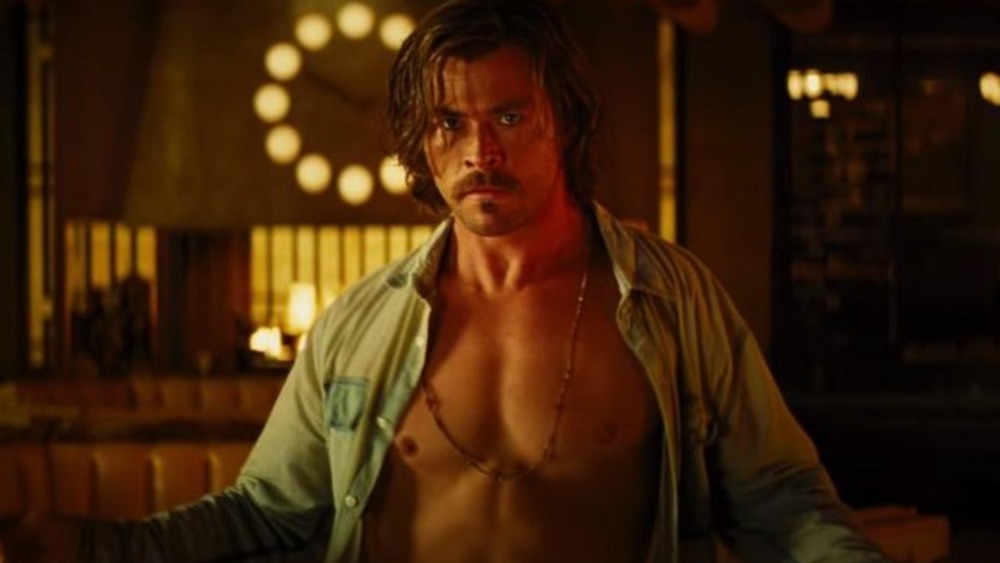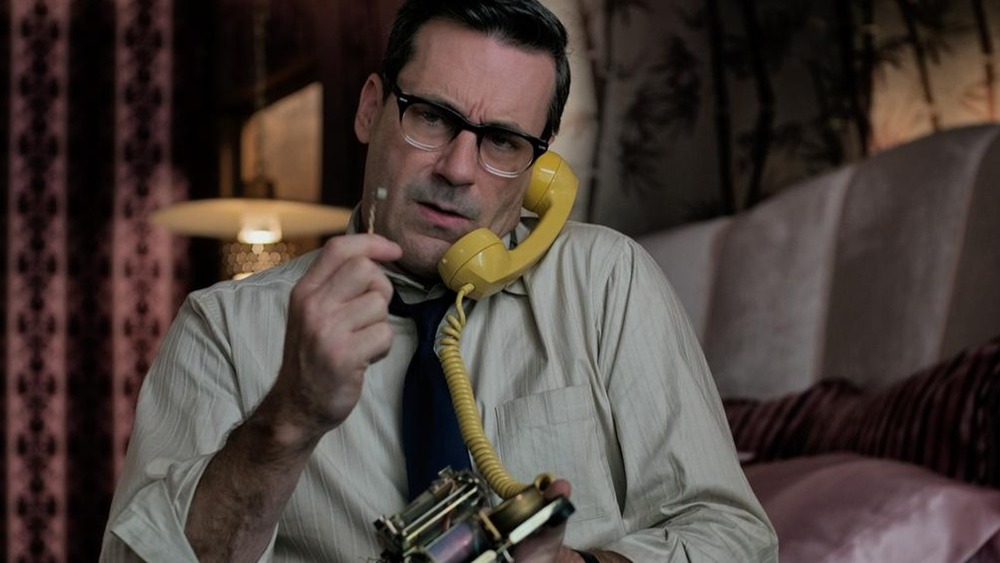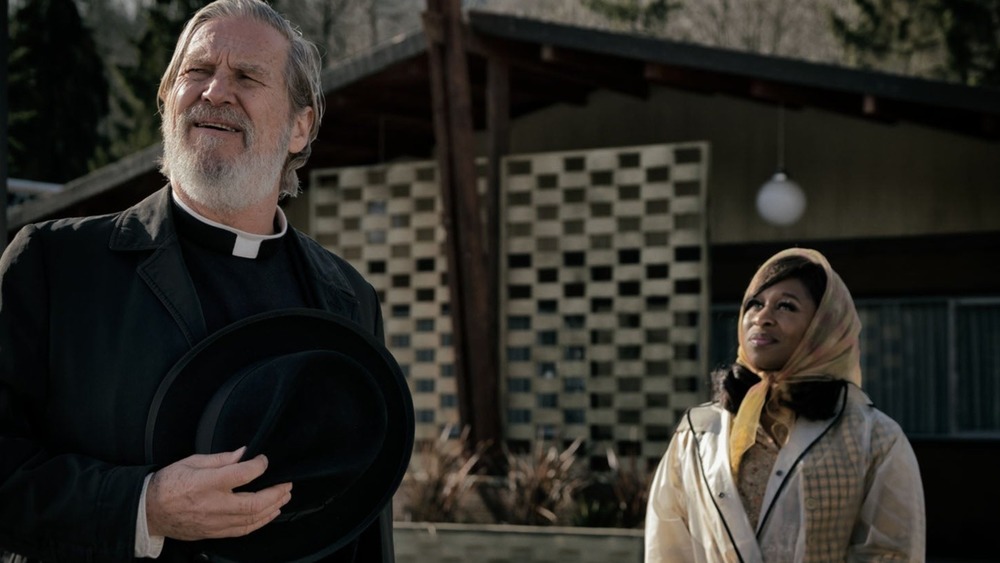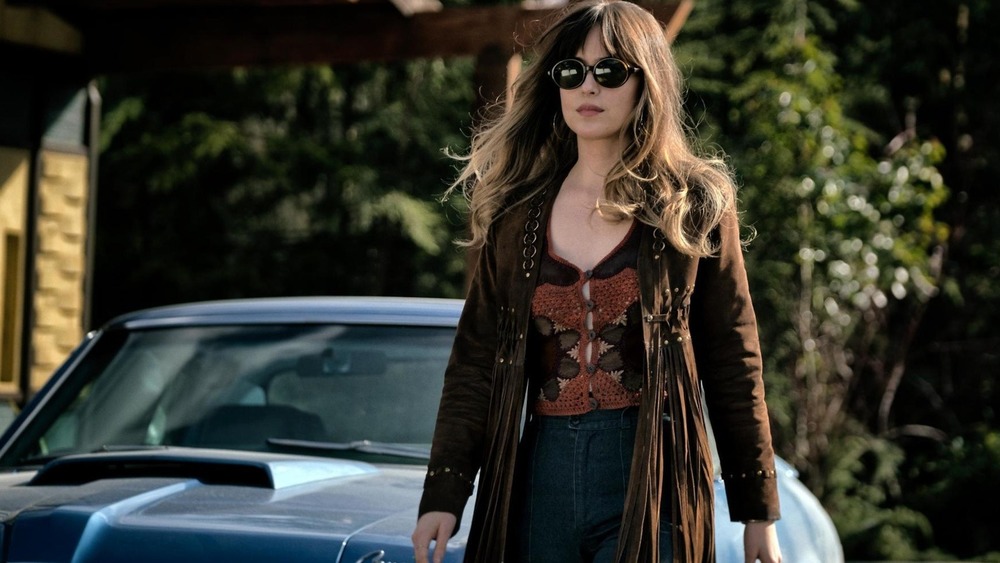Why Bad Times At The El Royale Bombed At The Box Office
Thinking back on the past few years of film history, a handful of moments are likely to come to mind. The return of Star Wars to the big screen via 2015's The Force Awakens, 2019's box office record-setting Avengers: Endgame, and Bong Joon-ho's Parasite sweeping the 2020 Oscars are surely frontrunners. Of course, there are plenty more landmark events you could probably think of because there are tons of highlights to skim through. Although, it's pretty unlikely that you're going to reminisce over your viewing experience of Bad Times at the El Royale during this trip down memory lane.
Drew Goddard — who wrote, produced, and directed Bad Times at the El Royale — presented his neo-noir thriller to the world on October 12, 2018. Boasting an all-star cast — including the likes of Chris Hemsworth, Jon Hamm, and Dakota Johnson — and promising a story of crime, suspense, and unexpected twists, Bad Times at the El Royale had the makings of greatness in it. However, if you look at its disappointing box office returns (making only $31.9 million on a $32 million budget, per Box Office Mojo), one has to wonder where exactly this movie went wrong.
Here's why Bad Times at the El Royale didn't become the cash cow it could have been.
The story lacks mass appeal
As the age of sequels, prequels, and reboots trudges on, it's becoming increasingly difficult for original concepts to break through to the mainstream. The masses have grown comfortable with the franchises they're familiar with and are willing to open up their wallets to drive that point home. As a consequence of this mindset, fresh, innovative projects fall by the wayside all too often and only make a small fraction of their larger, fan-favorite competitors. Bad Times at the El Royale suffered greatly in this way, partially because it wanted to tell a more nuanced, thoughtful story that pushed moviegoers out of their comfort zone.
Bad Times at the El Royale puts the spotlight on a host of characters, all with their own backgrounds, motives, and skeletons in their closets. They congregate at the El Royale hotel by pure happenstance, eventually winding up in the middle of a much larger, seedier situation. There's betrayal, espionage, murder, and even a few genuinely heartfelt moments, but it doesn't amount to an intriguing film as a whole. The players are more so archetypes (the mysterious villain, the kind-hearted criminal, the innocent soul caught up in the madness, etc.) as opposed to fully realized individuals, and the plot is too all over the place to resonate with a casual viewer base. As a result, Bad Times at the El Royale was fighting an uphill battle to make money from the get-go.
Bad Times at the El Royale burns too slowly
When it comes to the tenets of filmmaking, proper pacing stands among the most important of them all. Establishing a suitable pace for a story is crucial to how audiences are going to understand it, connect to the characters, and become invested. In the context of mystery thrillers, it's typical for productions of this variety to take a much slower, prodding approach relative to their high-intensity, action-packed contemporaries. However, Bad Times at the El Royale turned out too methodical for its own good, losing already risk-taking viewers by the time they reached the underdeveloped twist in the final act.
Following a very tedious 141-minute runtime, Jeff Bridges' Father Flynn and Cynthia Erivo's Darlene Sweet stand alone after a shootout at the titular hotel. They choose to burn the mysterious unlabeled tape that was supposedly worth a fortune and ride off into the sunset. The former leaves his life of crime behind, the latter decides to pursue her solo music career, and the movie just ... ends. It's a fitting conclusion, but it's not particularly fascinating, deserving of the over two-hour wait, or likely to get more people out to the theaters. In Variety's review of Bad Times at the El Royale, critic Peter Debruge described the film as "a worthwhile watch, even if for most, the script's payoff isn't enough to justify the pacing problems," and that couldn't be a more apt description.
Bad Times at the El Royale faced some still box office competition
As noted previously, Bad Times at the El Royale fell just shy of making its $32 million production budget back — meaning that it didn't scratch the surface of turning a profit. One can chalk up much of this poor performance to lack of interest from the casual moviegoer and the film's niche story, pacing issues, etc. But, in fairness to it, Goddard's second directorial effort had to contend with a handful of heavy-hitters arriving at the box office around the same time as its premiere, diminishing its already slim chances of breaking even, let alone serious bank.
Before Bad Times at the El Royale's release, Sony's Venom starring Tom Hardy debuted on October 5, 2018. Given the viability of superhero media these days and the immense popularity of anything connected to Spider-Man, it's no surprise the film grossed over $856 million by the time it left the big screen. Not to mention, the Bradley Cooper and Lady Gaga-led remake of A Star is Born arrived on the same day as Venom — taking in $436.2 million across its tenure. With powerhouses like that dominating the pop culture scene, Bad Times at the El Royale never stood a fighting chance in the financial department.
Is all of this to say that Bad Time at the El Royale is an objectively bad movie? Of course not, in fact, many have come to commend it. As of this writing, it holds an impressive 74 percent certified fresh score on Rotten Tomatoes. On top of that, most critics hail it for its unique visual style, mysterious undertones, and the ensemble cast's solid performances. Sadly, in the modern cinematic landscape, it takes more than aesthetic artistry and convincing acting work to make a nice chunk of change, and Bad Times at the El Royale is a tragic example.



